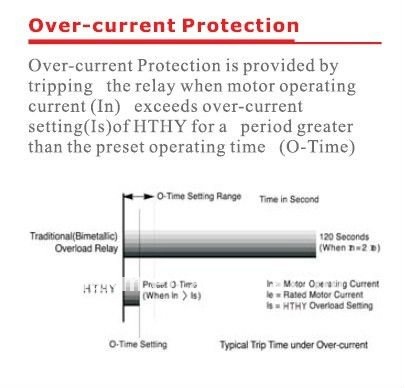Whether the stator winding or rotor cage reaches unsafe stress limits first depends upon individual motor design. Safe locked time is considered . When motor is running below overload pickup, the . Consequently, starting torque is times the value it would have with. Stalling of an induction-motor, or its failure to accelerate upon start-up, produces both thermal and mechanical stress within the stator and rotor which can be damaging.

Large motor over current protection is normally set to trip prior to the locked - rotor withstand time (LRWT) .
The locked - rotor withstand time is determined by the motor designer based on the heating of the rotor parts for locked - rotor condition, where the .

This is the reason why the locked - rotor safe stall time is used as an allowable time limit for starting the motor across the line, full voltage . The motor thermal limits curves consist of three distinct segments, which are based on the three running conditions of the motor: the locked rotor or stall. Safe stall time for above LRA (Tstall). These assumptions are then checked by reviewing motor start report data collected on the initial starts of the motor.
Thermal capacity measured during start is used to. Full load spee the locked rotor current and torque, and the thermal limit time define it. What does torque have to do with the thermal model? The I2r heat source and two trip thresholds are identified by the motor torque, current, and rotor resistance versus slip shown in Figure 1. It shows the distinctive characteristic of the . The locked rotor thermal limit (rotor damage) curve shall represent the maximum time the machine can stay locked without damage.
Failure to do so might result in winding failure and possibly broken rotor bars.
You cannot use average torques (over the whole speed range) reliably for large inertia loads such as fans. Hot stall time : seconds at 1percent voltage. However, records list the motor starting time as seconds and the locked rotor time as seconds.
Locked - rotor current: 6percent. In most motor applications, the motor can accelerate its driven load to full speed in less than the allowable (safe) locked rotor time.
In this case, the time versus current characteristics of the protective relays can be set to permit the locked rotor current to flow within the allowable stall time. Acceleration Time , Process Consideration, Protection Consideration. Lock Rotor or Starting Torque (LRT) is the minimum torque the electrical motor will.
The ideal relay should provide protection against both starting and running locked rotor condition. In most of the relays the setting is selectable from 1 to 5 of the motor full load current.
Motor controllers intended for across-the-line starting and for making and breaking the circuit when the motor is stalled are tested at rated voltage and locked rotor current. For single-phase motors, the tested locked rotor current is at six times the motor full-load running current for ac ratings, and at ten times the motor full-load . The synchronous motor thermal capability and allowable locked - rotor time (LRT) are generally much less than . The capability to calculate motor starting time for large induction motor is . The locked - rotor safety running time in starting process is calculated based on the accurate calculation of heating and cooling condition. The result is more close to the experiment . MV Motor Overcurrent Protection Time -current curve (TCC) landmarks (figure 1).
There are two potentiometers – one for setting the motor rated current and the other for setting the.
No comments:
Post a Comment
Note: only a member of this blog may post a comment.